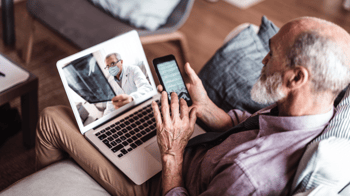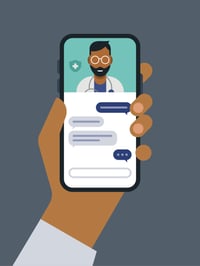
Strengthening Healthcare Conversational Experiences with Multilingual Capabilities
Today, more than 25 million people live with limited English proficiency (LEP) in the United States, and this country speaks over 350 languages.
Language barriers are an oft-overlooked determinant of quality care, but these communication gaps significantly impact patient adherence, understanding, and satisfaction. Healthcare creates unique and stressful scenarios where patients will want to speak in their native language, especially if they are in pain.
As a group, the LEP population is adversely affected by social determinants of health (SDOH), and disproportionately experience health inequities. People with limited English proficiency often have lower levels of education and are more likely to live below the federal poverty line than the overall U.S. population.
While these challenges have been present in the healthcare landscape for a while, the COVID-19 pandemic highlights just how dire language barriers between patients and healthcare providers can be. A study of patients at Boston-based Brigham and Women’s hospital found that primarily Spanish-speaking COVID-19 patients had a 35 percent greater risk of death from COVID-19 compared to other patients.
To combat these challenges in person, many healthcare organizations hire translators. This is not the most cost-efficient option nor the most supportive for patients as it hinders the connection between patient and provider. Additionally, what happens when a patient goes home and has more questions they forgot to ask or were uncomfortable to ask in person?
To empower and activate patients in their care journey, they need 24/7, on-demand access to healthcare information and services, regardless of the language they speak. The power of conversational AI to support and engage diverse patient populations is now more widely recognized (largely due to the COVID-19 pandemic) but as this technology expands deeper into healthcare, it is essential certain patient populations are not left behind.
While chatbots have been around for a while, improvements in artificial intelligence, natural language understanding, and machine translation have revitalized interest in these virtual assistants. Offering multilingual digital experiences to patients expands healthcare access to a global audience, and also supports groups of people within specific geography that are not proficient in the language of their region.
These chatbots can speak to patients in their native language and translate conversations from one language to another, meaning that if a patient expresses a different language than the service they’re contacting, they can still successfully communicate.
There are two common approaches to language translation, and Orbita can deliver both human and machine translation.
 Machine translation has lots of pros thanks to the use of conversational AI. It is cost-effective, available 24/7, and enables patients to access healthcare information conveniently. Human translation is better suited to nuanced or urgent situations that may require the precision of a human conversation.
Machine translation has lots of pros thanks to the use of conversational AI. It is cost-effective, available 24/7, and enables patients to access healthcare information conveniently. Human translation is better suited to nuanced or urgent situations that may require the precision of a human conversation.
With 17+ languages available in our digital health solutions, patients can quickly discover, navigate, and receive quality care.
Right now, Orbita supports a health system with the expansion of their digital front door solution to Spanish speakers through machine translation. This solution engages patients when they arrive at the organization’s website and aids in discovering and navigating care. Implementing machine translation means that patients can engage with this service in Spanish: the system will digest their answer, locate the appropriate response, and reproduce the answer to the user in Spanish.
In the United States, more than 43 million people speak Spanish as a first language (about 13 percent of the population), and that number continues to grow. Expanding these digital resources to this population significantly improves engagement rates and expands healthcare access and understanding.



